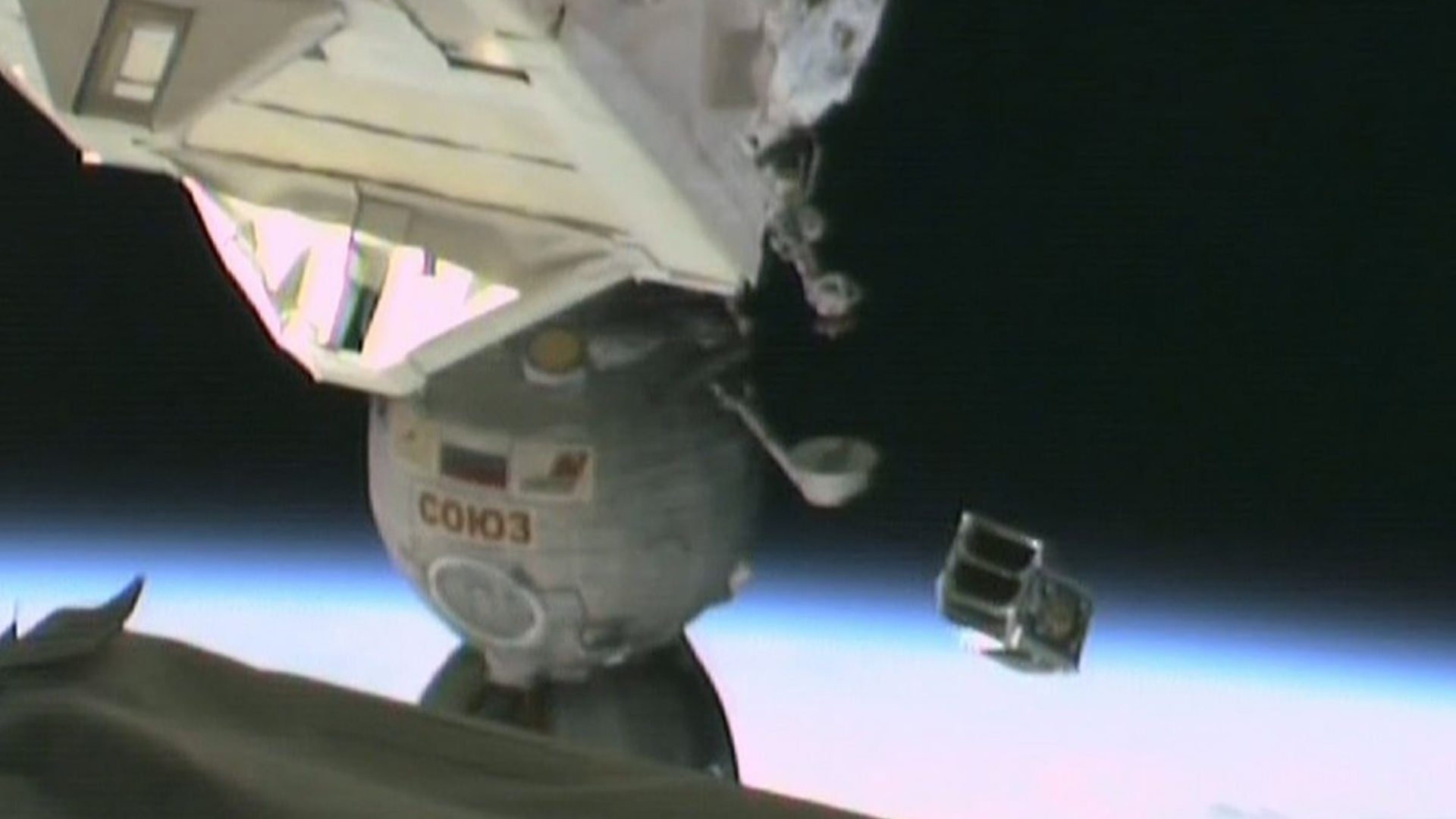'You're free!' Tiny Japanese satellites escape doomed space station years ahead of its fiery death | Space photo of the day for Oct. 21, 2025
All jokes aside, there is some serious science happening in this image.

In its efforts to broaden global access to space, the Japanese Aerospace Exploration Agency (JAXA) recently launched three cubesats from the Kibo module of the International Space Station (ISS). YOTSUBA-KULOVER, e-kagaku-1 and BOTAN, according to JAXA's press release.
What is it?
Cubesats, compact spacecraft usually no bigger than a shoebox, have helped transform the landscape of space research in the past 20 years. Originally invented in 1999 by professors from Stanford University and California Polytechnic State University, the cubesat format was designed to lower the barriers to space for universities, small organizations and companies.
By following a shared design standard and using off-the-shelf components, teams can build and launch fully functional satellites in months rather than years, and at a fraction of the cost of traditional spacecraft.
Where is it?
This image was taken at the ISS's Kibo module in low-Earth orbit around 248 miles (400 kilometers) above our planet.
Why is it amazing?
While cubesats are used in a variety of space research, the three recently deployed by JAXA are focused specifically on auroral activity and the understanding of space weather. The YOTSUBA-KULOVER cubesat was developed by the Kyushu Institute of Technology, while the e-kagaku-1 was built by students in the e-kagaku Association and BOTAN was constructed by the Chiba Institute of Technology.
All three will look at specific factors around space weather and auroras, including volcanic pumice and solar activity.
Want to learn more?
You can learn more about cubesats and the International Space Station.
Breaking space news, the latest updates on rocket launches, skywatching events and more!
Join our Space Forums to keep talking space on the latest missions, night sky and more! And if you have a news tip, correction or comment, let us know at: community@space.com.
Kenna Hughes-Castleberry is the Content Manager at Space.com. Formerly, she was the Science Communicator at JILA, a physics research institute. Kenna is also a freelance science journalist. Her beats include quantum technology, AI, animal intelligence, corvids, and cephalopods.
You must confirm your public display name before commenting
Please logout and then login again, you will then be prompted to enter your display name.

